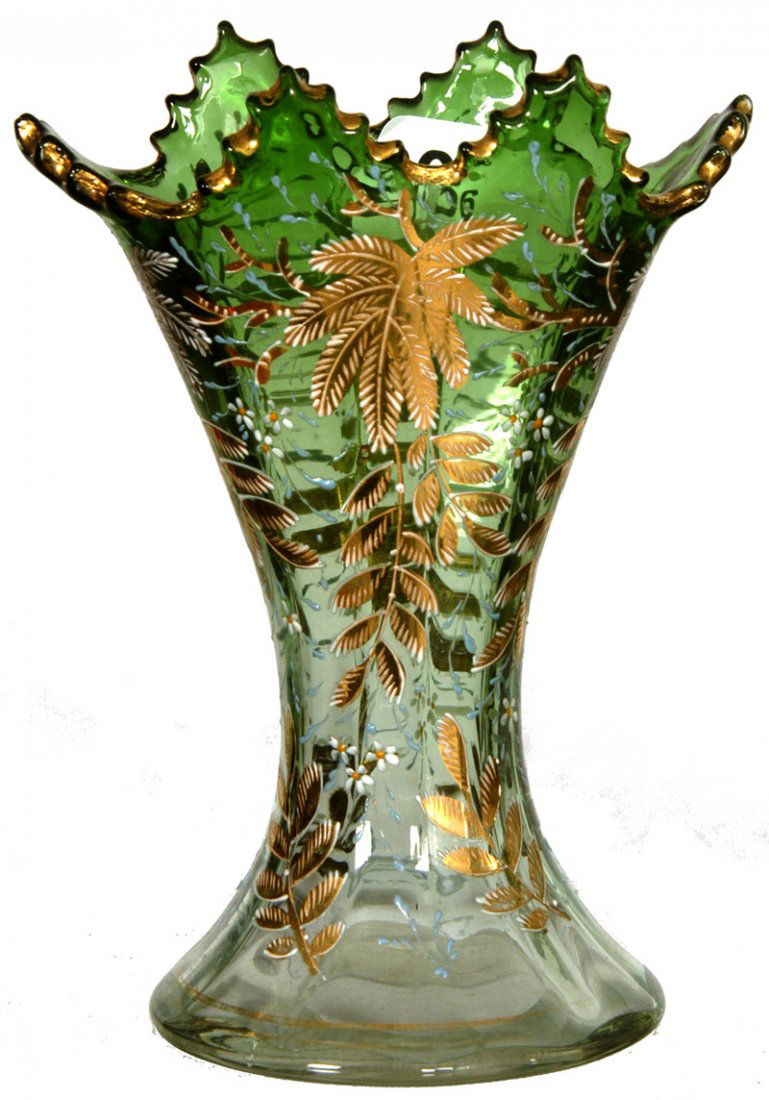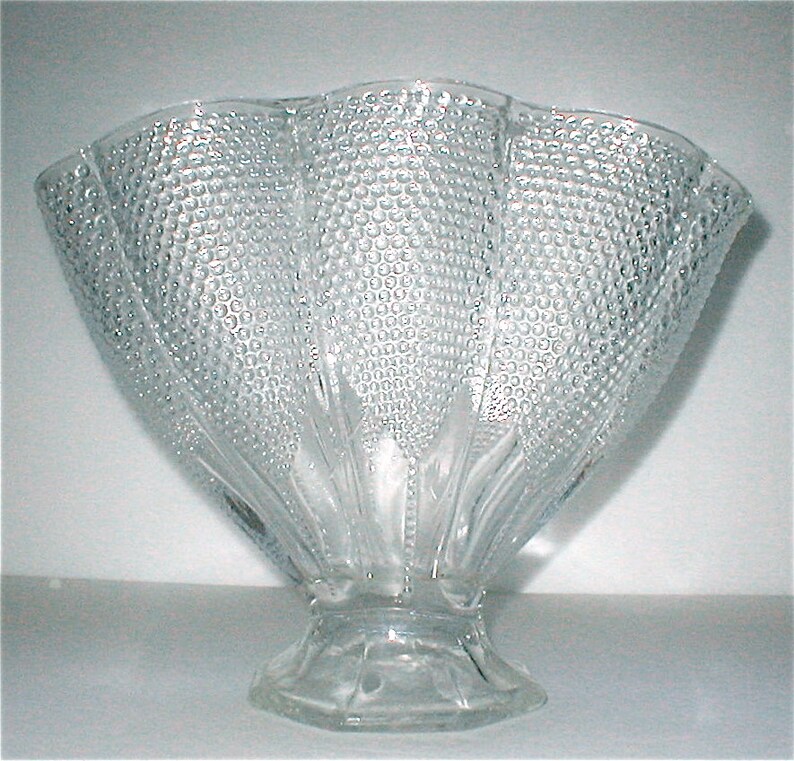

The sticker above of a glass maker with the words “Authentic Fenton Handmade” dates to 1970-1985, ( Ruby Lane). However, they did continue to use paper labels beyone 1970 on some products. Prior to 1970, Fenton adhered paper labels to most of its merchandise unfortunately, they were easily removed and in many cases, have been lost. Get help identifying pieces from old Fenton Glass catalogs provided by the Stretch Glass Society.If you acquaint yourself with genuine pieces of Fenton, through reputable antique centers and auctions, and become familiar with their patterns, through books and catalogs, you will begin to recognize many pieces whether marked or not.Fenton is known for their darling ruffles.

Glass from the 1970’s onward typically contains the “Fenton” mark as described above.Fenton produced quality glass, so you should not find any defects like bumps or air bubbles, unless it is a second (look for a star, rose (s-shaped), or block letter “F,” which denotes a second).Look for a Fenton tag (used before 1970), look for the Fenton mark (“Fenton” in an oval), look for “F” in an oval, indicating another company’s mold was used (1983+).Items like pitchers and baskets would receive hand-blown handles and pieces with more than one part, like cake stands, would be secured together with molten glass. Pieces were then removed after cooling and reheated to allow the artisans to create Fenton’s signature flirty edges or special spouts. To create any given piece, master craftsman would blow molten glass into hand-carved molds. It was a sad day in 2011 when the company closed it’s doors. Using gold, manganese, and cobalt, fresh new colors arrived on the market, making Fenton a “truly American product…collected worldwide” ( fentonartglass). Using Tiffany and Steuben iridescent glass as inspiration, Fenton ultimately produced over 130 patterns of what some have called “poor man’s Tiffany.”ĭuring their 100+ years of business producing high quality glass distributed world-wide, they developed numerous types of glass, including carnival and Bohemian, as well as glass in a myriad of beautiful colors. But eventually, they moved to West Virginia, which had the raw materials needed for glass production, and began producing their own glassware–with great success.įenton entered the glass market in 1908 with the introduction of what later became known as “carnival” glass. Initially they focused on painting “blank” glassware. In 1905, John and Frank Fenton of Ohio opened the Fenton Glass Company. The top case has glass doors, so I can see my vases whenever I’m in the room. I keep the vases in an antique secretary that I inherited from my grandmother. If I collect anything, it’s almost always small and contained. I’ve been buying small vases for several years now and have used them for my kid’s dandelion bouquets and other small flowers like violets and forget-me-nots. Other glass-related collecting posts that you might be interested in: elegant glass, crackle glass, and amberina glass. Rarer, more elaborate pieces like lamps and pitcher and glass sets still command pretty good money.īut you know what that means? If you’re a collector, now is the time to pick up pieces when you find them cheaply, because the value can only go up.


Over the years, I’ve bought and sold many pieces, but realized recently that I seem to have created yet another “accidental collection.” This time of small vases, including five or six by Fenton.Īnd while glassware, especial clear, is not selling these days, Fenton still has a market, albeit smaller and involving less money than in the 80’s and 90’s. Today I’ll be chatting about collecting vintage Fenton glass, produced for over 100 years in West Virginia (1905-2011) and at one time, the largest supplier of colored glass in the country. Hi there! I hope you are well and that you had a good weekend.


 0 kommentar(er)
0 kommentar(er)
